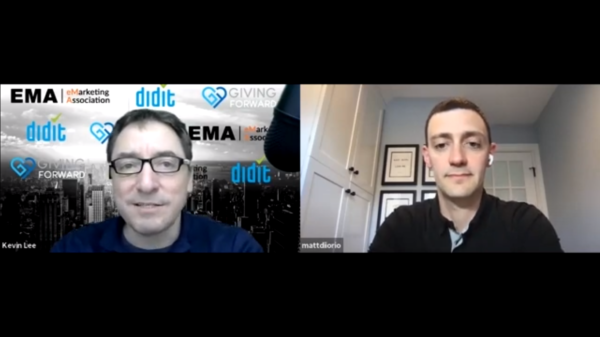
A number of recent announcements from tech giants Apple and Google concerning the future of third-party tracking cookies has led to considerable hand-wringing – and even panic — among many digital marketers.
This past March, Apple announced that its popular Safari browser was now blocking all third-party cookies. Google, which back in early 2020 announced plans that its Chrome browser would begin blocking third-party cookies sometime in 2022, announced in a March 2021 blog post that it would not provide any alternative user-level tracking technologies to substitute for the cookie. Chrome and Safari account for more than half of worldwide browser usage (Firefox, accounting for about 9 percent of browser share, has blocked cookies since 2019).
Shock and Awe
It’s no surprise that many digital marketers have taken these recent announcements with shock. Losing the ability to serve third-party cookies makes targeting less precise. It throws a wrench into retargeting — a popular way for marketers to remind users of their products and/or to remind them to complete their shopping cart checkouts. Cookies are also widely used to frequency-cap ads and for reporting purposes. Marketers who’ve grown reliant on cookies to accomplish all of these tasks will doubtless have to adjust and adapt their operations.
A Better Way Forward
While losing the cookie will change targeting, it will certainly not eliminate it. According to Oren Netzer — recently interviewed by Kevin Lee for the eMarketing Association, the loss of cookies will fragment available data into three groups.
“There’s going to be first-party data that I think everybody is pretty busy collecting right now, there’s going to be logged-in inventory (the social platforms such as Facebook), where you’ll be able to pretty much use the same techniques you’re using today, and then there’s all the rest. And it’s with ‘all the rest’ that I think there are opportunities that no one is taking advantage of today. And the obvious use of that is contextual advertising, but I think there’s a lot more that can be done if you marry AI with the non-PII data that’s still going to remain. And we’re seeing an AI solution coming from Google in Chrome, where they’re developing something using the Federated Learning of Cohorts.”
Beyond these targeting methodologies, marketers may continue to use IP numbers which in many cases can be tracked back to physical locations, to geo-segment their campaigns. By triangulating geolocation to visited site URL, marketers may already have enough information to infer enough information about an individual user to personalize ad campaigns so that they are effective (although perhaps not as effective as they would have been using cookies).
Doubling Down on First-Party Data and Moving to a “Consent-Driven” Model
Perhaps the most important way that marketers and agencies can deal with targeting in a cookieless marketing ecosystem is to cultivate direct relationships with their customers and affinity groups. Customers — provided they have reasonable assurance that the entity they’re dealing with has strong data protection policies in place — may have no problem sharing PII-level data with the entity; in fact, they may freely share this data if it provides them a benefit.
Metlife’s Matt Diiorio – recently interviewed for the eMarketing Association – indicated that his firm is moving to what he calls “consent-driven” marketing.
“Let’s be honest — privacy is a big issue right now with consumers, and it’s going to be, moving forward. So (consumers are asking) ‘what are brands doing with my information?’ How do you build trust with the consumer to be able to use their information? So a couple of things that we’ve been thinking about for that future is first, that consent-driven model — how people are opting in to give you that information, and how do you nurture those people, and by using a unified data approach: how do we think about potentially having unified IDs that we attach to different people that are able to hit on all those bits and pieces of who they are in both an online and offline manner. If we’re able to do this right and we’re able to build trust with people, I think at the end of the day it will allow us to target more effectively. At the end of the day, if we know more about people, and they’re giving us their consent, think about it: we can insert better recommendations on products and services, and actually build a better relationship.”
What’s Ahead for You as a Marketer?
While the prospect of a cookieless marketing ecosystem may seem daunting — even frightening — there’s no need to panic. There is, however a pressing need to plan for such a future, whether it’s by cultivating more first-party relationships with consumers, exploring the potential of traditional contextual advertising, planning to double down on campaigns aimed at logged-in inventory such as provided by the social platforms, or by exploring technologies that triangulate between IP geolocation data and site URL. Marketers doing this work now will fare much better in a cookieless world than those who fail to plan for such a future.
- 10 Mistakes to Avoid When Using QR Codes for Marketing - September 20, 2023
- Kevin Lee on How AI Changes the SEO Landscape - August 31, 2023
- The Power of Compound Marketing: Kevin Lee Presents @ 1MediaWorld 2023 Global Conference - March 7, 2023
